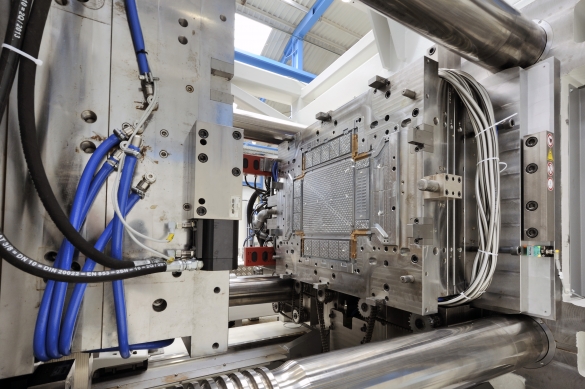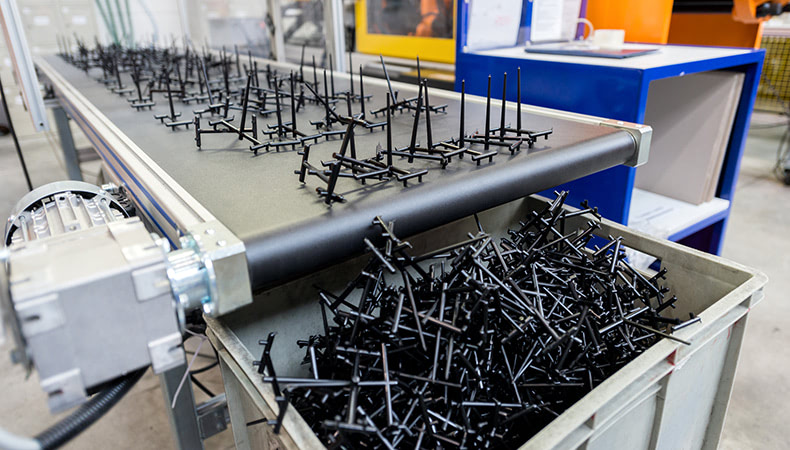Some Known Details About Hon Hai Precision s
Wiki Article
The Facts About Mfg Uncovered
Table of ContentsSome Known Questions About Die Casting.Things about Die CastingLittle Known Facts About Die Casting.Not known Details About Hon Hai Precision Get This Report on Mfg3 Easy Facts About Lean Manufacturing Described
The message on this page is a sample from our complete White Paper 'Shot Moulding for Customers' - * Sample text * - for full guide click the download switch over! Introduction This guide is intended for people that are wanting to source plastic mouldings. It provides a much needed understanding right into all that is involved with creating plastic parts, from the mould tool called for to the moulding procedure itself.If you wish to check out even more, the guide covers kinds of mould tools, as well as unique ending up processes such as colours & plating. Words that are underlined can be found in the glossary in the appendix ... Component I: Moulding: The Basics The Benefits of Injection Moulding Plastic shot moulding is a really specific process that uses a number of advantages over various other plastic processing methods.
Accuracy is ideal for really intricate parts. You can hold this moulding in the hand of your hand as well as it has employers, ribs, steel inserts, side cores and also openings, made with a gliding shut off attribute in the mould device.
All About Plastic Manufacturing


Hon Hai Precision - Questions
from material feed Product melting; material injectionProduct shot time cooling down ejection as well as the re-closing of the mould tool ready for the next cycleFollowing Draft angles - The wall surfaces of a moulded part should be somewhat tapered in the instructions in which the part is expelled from the mould device, to enable the part to be ejected quickly.Ejector stroke - The pushing out of ejector pins to expel the moulded component from the mould tool. Ejector stroke speed, size as well as timing needs to be thoroughly regulated to avoid damages to the ejectors and mould tool, yet at the exact same time make the moulding cycle as short as feasible.

The Main Principles Of Manufacturing
Ribs - When a plastic part has slim wall surfaces, ribs are contributed to the design to make the slim wall surfaces more powerful Side cores - Side action which creates a function on a moulded part, at an opposing angle to web link the normal opening instructions of the mould tool. mfg. The side core needs to be able to withdraw as the plastic part can not be ejected otherwise.
Wall surfaces - The sides of a moulded component The text on this web page is a sample from our complete White Paper 'Injection Moulding for Customers'.
Production procedure for generating parts by injecting molten product into a mould, or mold and mildew Simplified layout of the procedure Shot moulding (united state punctuation: shot molding) is a manufacturing procedure for creating parts by infusing molten product right into a mould, or mold and mildew. Injection moulding can be done with a host of materials mostly including metals (for which the procedure is called die-casting), glasses, elastomers, confections, as well as most typically polycarbonate as well as thermosetting polymers. Shot moulding is widely made use of for producing a range of parts, from the smallest components to entire body panels of cars. Shot moulding makes use of a special-purpose device that has three components: the injection unit, the mould as well as the clamp.
Some Ideas on Mfg You Should Know
Refine attributes [modify] Shot moulding uses a ram or screw-type bettor to require molten plastic or rubber product into a mould tooth cavity; this strengthens into a shape that has actually complied with the contour of the mould. It is most commonly made use of to refine both thermoplastic and also thermosetting polymers, with the volume use the previous being substantially higher.: 13 Thermoplastics prevail due to characteristics that make them very suitable for shot moulding, such as simplicity of recycling, convenience for a vast range of applications,: 89 as well as ability to soften and also move on heating.In multiple cavity moulds, each dental caries can be similar and also create the same parts or can be distinct as well as create numerous different geometries throughout a solitary cycle.
The screw supplies the raw material forward, mixes as well as homogenises the thermal as well as thick circulations of the polymer, and also reduces the needed heating semiconductor manufacturing time by mechanically shearing the material as well as adding a substantial quantity of frictional home heating to the polymer. The product feeds onward with a check shutoff and accumulates at the front of the screw into a volume called a shot. When enough product has actually gathered, the product is required at high stress and velocity right into the component creating tooth cavity. The exact quantity of shrinking is a feature of the resin being used, and can be reasonably predictable. To avoid spikes in stress, the procedure usually uses a transfer position corresponding to a 9598% full tooth cavity where the screw shifts from a constant velocity to a continuous why not try these out pressure control.
The Lean Manufacturing Statements
The packaging pressure is used until the gateway (dental caries entryway) solidifies. Due to its small dimension, the gate is normally the very first area to solidify via its whole thickness.: 16 Once the entrance strengthens, no more material can go into the cavity; accordingly, the screw reciprocates as well as acquires product for the following cycle while the product within the mould cools down so that it can be expelled and also be dimensionally steady.Report this wiki page